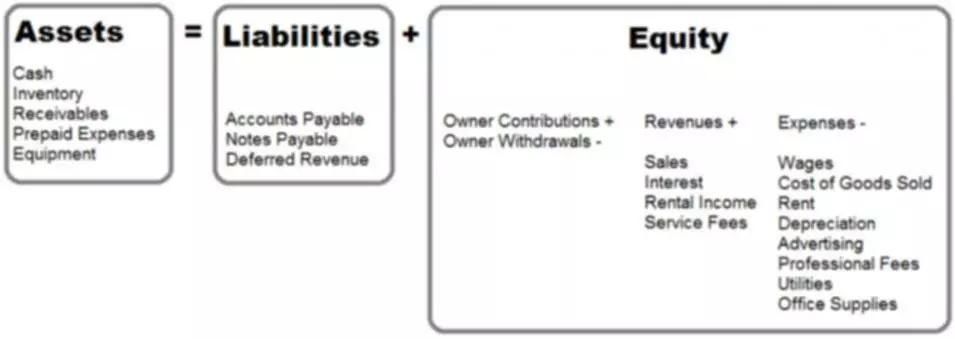Content

Long-term liquidity shows how much of the company’s capital has been raised by shareholders (via share capital and retained earnings) and through long-term borrowings. Hence, shareholders are more concerned with the long-term liquidity of the company. Lack of solvency in the business, may become the cause for its liquidation, as its directly affects the firm’s day to day operations and thus the revenue. For a layman, liquidity and solvency are one and the same, but there exists a fine line of difference between these two. So, take a glance at the article provided to you, to have a clear understanding of the two. Calculate the approximate cash flow generated by business by adding the after-tax business income to all the non-cash expenses.
The cash ratio is a much stricter way to measure liquidity than the current ratio. Instead of comparing all current assets to current liability, it uses only cash and cash-equivalent assets. Cash-equivalents are investments that have a maturity date of three months or less, such as short-term certificates of deposit. Solvency is defined as the firm’s potential to carry on business activities in the foreseeable future, so as to expand and grow. It is the measure of the company’s capability to fulfil its long-term financial obligations when they fall due for payment. A fairly common measure related to solvency is the debt-to-equity ratio.
Liquidity Ratio: Definition, Types & Examples
Adam Hayes, Ph.D., CFA, is a financial writer with 15+ years Wall Street experience as a derivatives trader. Besides his extensive derivative trading expertise, Adam is an expert in economics and behavioral finance. Adam received his master’s in economics from The New School for Social Research and his Ph.D. from the University of Wisconsin-Madison in sociology. He is a CFA charterholder as well as holding FINRA Series 7, 55 & 63 licenses.

Matt Levine at Bloomberg also has good comments on this – basically it was a boring bank run/collapse. With it being primarily a duration issue (rather than an impaired assets issue) and a large amount of deposits, I also suspect we’ll see an acquisition.Check the date on this too. The problem in 2008 is that these theoretically-perfect-credit, infinite-leverage-allowed instruments were in fact bad credits because the independence assumption was violated. The failure couldn’t have happened within the regular system if the banks were restricted to directly owning mortgages. This ends up costing the Very Large Bank $900 and a bit of headache to own a bit more bank that’s presumptively worth $650.
Three Key Ratios
The quick ratio is a strong measure of immediate liquidity, meaning how a firm can respond to financial needs today. Both assets and liabilities play an important role in a firm’s financial soundness and are reflected in the firm’s balance sheet. This calculation tests the company’s capacity to meet its debt interest cost equal to its Earnings before Interest and Taxes (EBIT). The greater the ratio, the higher the capacity of the firm to pay its interest expenses. This ratio indicates the number of times that inventory is turned over within a year.
Does liquidity affect solvency?
Although fundamentally different, liquidity and solvency are both connected to the ability of an organization to meet its debt obligations on time and in a way that doesn't lead to unmanageable losses. Companies put short-term strategies into place to maintain liquidity and long-term strategies for solvency.
Insolvency, however, indicates a more serious underlying problem that generally takes longer to work out, and it may necessitate major changes and radical restructuring of a company’s operations. Management of a company faced with an insolvency will have to make tough decisions to reduce debt, such as closing plants, selling off assets, and laying off employees. A comparison of financial ratios for two or more companies would only be meaningful if they operate in the same industry.
Solvency vs. liquidity. A decomposition of European banks’ credit risk over the business cycle☆
Want someone to work out your solvency vs liquidity plan, rather than doing it yourself? Once you’ve made the obvious cuts, look at any short-term ways to save money. For example, you might need to lay off some employees until you’ve dug your business out of its current difficulties.
Liquidity refers to an enterprise’s ability to pay short-term obligations—the term also refers to a company’s capability to sell assets quickly to raise cash. A company that has strong liquidity but poor solvency is in more trouble. This means that the firm has cash on hand to pay its immediate bills, but eventually it won’t be able to cover its debts. A company that is insolvent or is only barely solvent and that has poor liquidity is in a weak position.
As the quick ratio falls between the current ratio and the cash ratio, the “ideal” result also falls between those two ratios. Lenders will frequently look for a quick ratio of 1.2 or above before they’ll extend further debt to a company. A company could, for example, be solvent in so far as their balance sheet is healthy, but have poor cash flow because of problems securing short-term financing or being paid by customers they’ve invoiced. Liquidity is the ability of an organisation to service its short term debts. Solvency is the ability of a company to pay its long-term liabilities.
We assume that your enterprise is utilizing financial statements on a regular basis that are accurate. Liquidity and solvency ratios are important indicators of a company’s financial health. While they are related, they measure different aspects https://www.bookstime.com/articles/solvency-vs-liquidity of a company’s financial stability. A third problem with these ratios is that they do not provide any insight into new lines of business that a company is rolling out, and which might be starting to generate significant positive cash flow.
All of this information should be contained in your financial reports like your income statement, cash flow statement, and your financial statement—provided you are on top of your bookkeeping. Your bookkeeper or accountant can certainly help you decipher your financial reports to make the calculation. Solvency stresses on whether assets of the company are greater than its liabilities. Assets are the resources owned by the enterprise while liabilities are the obligations which are owed by the company.
Even if you offered to sell them the bank for the price of one Snickers bar, on the condition that they put in the $1,500 to make it whole, that’s still a worse deal for them than them buying into GB Bank. But, if your moral suasion and willingness to pay the seventeenth withdrawal stops the eighteenth and subsequent, then you, like George Bailey, can stop the run on your bank. This is a preview of subscription content, access via your institution. If you’ve got plenty of sales, but each sale has a tiny profit margin, then getting more customers won’t help.
Definition of Liquidity
Best and worse case scenarios should be developed so that the company can prepare for either direction with confidence that enough cash is available for the continuance of operations. Weekly cash forecasts that tie to the budget aid in predicting potential cash crunches. Quarterly budget/forecast reviews allow for anticipation of cash needs and allow for strategies to be adjusted to reflect the changing environment. Once you’ve improved how your business looks on paper, you’ll find it much easier to get funding to further your company’s growth. But be cautious about acquiring new debt; too much of that will put you right back where you started. At the very least, it will help move your application up to the top of the pile.
- My reading of the terms is that it’s basically the Fed offering to lend you $100 at (1yr) SOFR+10bp collateralized by (let’s say) $75 face value of Treasurys, with general recourse.
- These ratios also do not account for the presence of existing lines of credit that can be drawn down to access additional funding on short notice.
- Liquidity evaluates a company’s capacity to pay short-term debt commitments, whereas solvency refers to a company’s capacity to pay long-term debt.
- It may also be useful to extend these ratios into the future, both through extrapolation and by using the applicant’s budgeted financial statements for the next year.
- If it has little access to cash, and specifically cannot raise enough cash to pay its bills over the next 12 months, the company is considered illiquid.
This paper provides evidence for the procyclicality of banks’ credit risk by investigating the historical resilience of several European banking sectors before and after the 2008 banking crisis. It provides a decomposition of banks’ probabilities of default between a solvency and a liquidity component. The results show a gradual build-up of fragilities before 2008 in most countries. Increased probabilities of default are shown to be mainly driven by a surge in liquidity risk, even when shocks of relatively low magnitude are imposed on the system.
Solvency helps to measure long-term debt servicing capacity, while liquidity measures the same in the short term. Solvency and liquidity are important metrics to evaluate a business’s financial health. The main problem with solvency ratios is that there is no single ratio that provides the best overview of the solvency of a business.